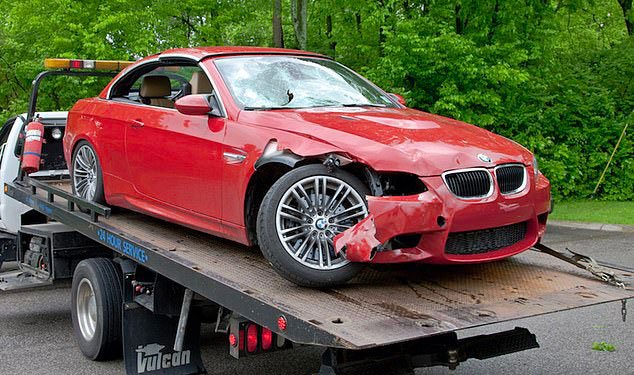One of the most important checks you should carry out before purchasing a used car is an insurance write-off check. In the UK we describe a car as ‘written-off’ after it has been in an accident and suffered damage. Sometimes the damage is too severe, or the repair costs will far exceed the car’s current value, and it is “scrapped”. However, sometimes the damage is only minor, and can easily be repaired.
There are four categories of write off:
- Category A
- Category B
- Category S
- Category N
Previously, there were different categories like Category D (“CAT D”) etc, that you may have been familiar with. These categories were changed in October 2017 and the current write-off cats according to the DVLA, are above.
We have clarified the categories further for you below – note that if you want to check the status of a write-off then FreeCarCheck can provide this information as part of our Premium check, for any UK vehicle, for only £8.75. Enter your reg number above to begin.
What is a Category A Write-Off?
These are vehicles that have suffered from severe damage and can never be roadworthy again. They are only good for scrap. A CAT A vehicle will have suffered severe damage in the past, probably in an accident or fire… The insurance company or agent that handled the claim decided the car could not be repaired. Note that most Cat A vehicles are destroyed and if you see one for sale you should be very suspicious. However, occasionally a Cat A vehicle may be returned to its owner, who may subsequently repair it, if it’s a speciality or very valuable vehicle — but this is rare.
What is a Category B Write-Off?
Cars that have suffered extensive body damage, although some parts will be salvageable (whereas Cat A has no salvageable parts). A CAT B car will never be roadworthy again, but it is possible to take the parts from it and use them on other vehicles.
What is a Category S Write-Off?
This applies to vehicles that have suffered structural damage. For example, a bent or twisted chassis or collapsed crumple zone. Although unsafe to drive with this damage, a professional can repair them so they can be driven on the road again. While the car can safely be repaired and put back on the road, Cat S cars must be re-registered with the DVLA before being put back on the road.
…And what about Category N?
This is the most common type of insurance write-off and is usually for vehicles that have suffered non-structural damage. For example, a problem with the electronics that isn’t economical to repair; another example might be faults with the steering or braking systems, both can also mean a car is written off as a “Category N” (Cat N).
So in short, Category A is extremely damaged and good only for scrap. Category N is the equvalent to “Cat D” before, and is the least severe of the four options. But should you worry if the car you’re about to buy is a Cat N? It depends…

An insurance write-off check will tell you if the car you are looking at has been recorded as a write-off. It will also determine which of the above categories the vehicle belongs to.
An Insurance Write-Off Check offers complete peace of mind
Although Category S and Category N write-offs can be repaired and the car sold, it’s still worth knowing whether a car has been written off in the past. This is where FreeCarCheck comes in!
When selling a vehicle that has been previously written off, UK law states that (if you are a dealer/trade) then you must inform any potential buyers but there is no legal requirement for a private seller to tell you. So an unexpected result from an insurance write-off check could mean you are buying from a dishonest person. It’s always best to double check in this situation. An insurance write-off check will give you peace of mind that you’re not buying a previously damaged car.
What kind of information does your Write-Off check show?
The amount of information that is shared with the DVLA (and other sources that we use to obtain our data) is variable – often, these sources will have the date of when the insurance write-off was recorded, the Category (see above), and occasionally some other information. However be aware that Write Off Checks are typically NOT as in-depth as, say, an MOT test. If you are looking for a detailed rundown of the damage, then you probably won’t get it, because that information is sadly not always recorded.
Although many CAT N vehicles are repaired to a high standard, some unscrupulous repairers skimp on expensive components that are hard to check, like airbags. It can therefore be a good idea to have your vehicle professionally inspected, to be sure it’s safe.
Should I buy a Cat N or Cat S car?
This is a good question, and there’s no easy answer. As long as you go into it with your eyes open, things can work out well. The same caveats apply to CAT S or CAT N cars as applied previously to CAT C and CAT D vehicles: buyer beware. Note that written-off cars are nearly always worth less than their undamaged counterparts. While this should be reflected in the price you pay, you may find it hard to sell a CAT S or CAT N car, as some buyers will simply not even consider them.
Don’t forget as well that some insurance companies will either not insure a former write-off, and some will charge more if they do. As always, it pays to shop around!
Don’t wait – get a car check from us and check the Write-Off history instantly!

